ISRO (Indian Space Research Organisation) is one of the leading space agencies in the world. Starting from zero, it has come to the fifth rank among the world’s top space agencies.
It has been almost 60 years since the Indian National Committee for Space Research (INCOSPAR) was established, and later it was given the name Indian Space Research Organisation (ISRO).
ISRO has achieved so many records in its journey including the launch of 104 satellites in a single rocket in 2017. In 2013, ISRO launched a spacecraft “Mangalyaan” into orbit of the Mars Planet, and it made India become 1st country to reach Mars at its very first attempt.
- While considering budgets and space missions only four countries (USA, China, Europe, and Russia) are ahead of this agency.
Here in this article, you will read everything about ISRO, from the origin and history of ISRO to its future missions. We have mentioned “everything you need to know about ISRO” from the student’s point of view and for the general knowledge point of view in a proper and well-organized manner.
History of ISRO and Past Missions
Here in this section, we have mentioned some ISRO information including their history and past missions:
Every technology and its industry has a time in their past when they were not even in existence. Same as ISRO, there was nothing like a space agency in India before 1962.
When space missions of the Soviet Union and the United States were in the experimental stage, Dr. Vikram Sarabhai understood the importance of space technology in India.
Under the supervision of the Department of Atomic Energy (DAE) and scientist Vikram Sarabhai, India established its first space agency “Indian National Committee for Space Research” (INCOSPAR) in 1962. The goal of this agency was to establish space technology for national development including planetary exploration and space science research.
First Sounding Rocket Launch
In 1963 Thumba Equatorial Rocket Launching Station (TERLS) was established at Thumba near Thiruvananthapuram, Kerala. On 21 November 1963, India launches its first sounding rocket from TERLS.
This rocket was imported from Russia (M-100). And thus India started the journey for space research programs.
- A sounding rocket sometimes called a research rocket, is small in size and uses less propellant to research the upper atmospheric region.
In 1965 INCOSPAR started making Indian-sounding rockets. They launched many Indians made solid propellant rockets and gained experience in this technology.
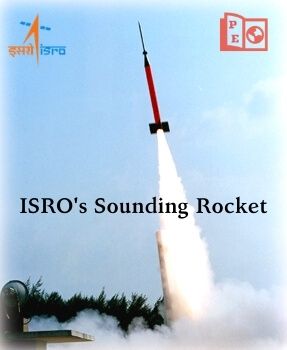
INCOSPAR become ISRO
On independence day 15 August 1969, INCOSPAR (Indian National Committee for Space Research) changed its name and become ISRO (Indian Space Research Organization).
Launched the first Indian satellite
ISRO made its first satellite “Aryabhata” in name of Indian mathematician and astronomer Aryabhata.
On 19 April 1975, ISRO launched its first satellite Aryabhata with help of the Russian-made launch vehicle Kosmos-3M (C-1 Intercosmos) in Kapustin Yar Russia. The satellite was just an experimental satellite with 360 kilograms.
On 7 June 1979, the first experimental remote sensing satellite Bhaskara-I launched, in the same site Kapustin Yar Russia with the same launch vehicle C-1 Intercosmos.
Development of SLV and Rohini Series
Indians started to make their own Launch Vehicle and they developed the first Satellite Launch Vehicle (SLV) in 1979. They launch their first rocket SLV-3 on 10 August 1979, carrying the “Rohini Technology Payload (RTP)” satellite. This mission of ISRO was unsuccessful. Whereas the first successful SLV-3 launch mission happened on 18 July 1980 that carried Rohini Satellite RS-1.
After that, with the help of the SLV-3 launcher, ISRO launched two Rohini series satellites: Rohini Satellite RS-D1 on 31 May 1981 and Rohini Satellite RS-D2 on 18 April 1983. These satellites were launched for the purpose of Earth’s observation.
Launch of the APPLE satellite
19 July 1981, They launched APPLE (Ariane Passenger Payload Experiment) with the help of Ariane -1(V-3) launch vehicle. APPLE was India’s first experimental geostationary communication satellite.
On 20 Nov 1981, they launched Experimental Remote Sensing Bhaskara II with a C-1 Intercosmos launcher.
INSAT Series Satellites
After the above-mentioned history of the ISRO mission, they started to build INSAT (Indian National Satellite System) series satellites. On 10 April 1982, ISRO launched the INSAT-1A satellite with help of the Delta launch vehicle. This mission was unsuccessful because the altitude control propellant got exhausted in the orbit.
After that many INSAT series satellites have been launched successfully with help of different launchers. These satellites are:
INSAT-1B (30 Aug 1983), NSAT-1C (22 Jul 1988), INSAT-1D (12 Jun 1990), INSAT-2A (10 Jul 1992), INSAT-2B (23 Jul 1993), INSAT-2C (07 Dec 1995), INSAT-2D (04 Jun 1997), INSAT-2E (03 Apr 1999), INSAT-3B (22 Mar 2000), INSAT-3C (24 Jan 2002), INSAT-3A (10 Apr 2003), INSAT-3E (28 Sep 2003), INSAT-4A (22 Dec 2005), INSAT-4C (10 Jul 2006), INSAT-4B (12 Mar 2007), INSAT-4CR (02 Sep 2007).
INSAT series satellites are multipurpose geostationary satellites, help in many sectors such as telecommunications, broadcasting, meteorology, and search-and-rescue needs of India.
Development of ASLV and SROSS satellites series
After the launch of INSAT-1B, ISRO developed an advanced launch vehicle than SLV and it was called the Augmented Satellite Launch Vehicle (ASLV). The first launch of ASLV with the SROSS-1 satellite was unsuccessful. It was launched from Satish Dhawan Space Centre (SDSC) SHAR Sriharikota, and could not reach the orbit.
And then some other SROSS series satellites launched by ISRO in upcoming years. These satellites were:
SROSS-2 (13 Jul 1988), SROSS-C (20 May 1992), SROSS-C2 (04 May 1994).
IRS Series Satellites
ISRO started to develop Indian Remote Sensing (IRS) Satellites after the launch of SROSS-1. On 17 March 1988, ISRO started its mission for the indigenous state-of-art remote sensing satellite (IRS-1A) on the Vostok launcher of Russia.
After that, they launched many IRS series satellites, such as IRS-1B (29 Aug 1991), IRS-1E (20 Sep 1993), IRS-P2 (15 Oct 1994), IRS-1C (28 Dec 1995), IRS-P3 (21 Mar 1996), IRS-1D (29 Sep 1997), Ocean-sat (IRS-P4) (26 May 1999).
Time of PSLV launch vehicle
Indian Space Research Organization started to develop Polar Satellite Launch Vehicle (PSLV) after 1990. This PSLV launch vehicle contributed to many achievements for ISRO.
Though the first launch of PSLV-D1 with IRS-1E on 20 Sep 1993 was unsuccessful. Whereas the second launch of PSLV-D2 with IRS-P2 satellite was done on 15 Oct 1994 and it placed the satellite successfully in Polar Sun-synchronous Orbit. Then it launched many IRS series satellites.
After this, ISRO got many achievements with help of the PSLV rockets. Some famous satellite launches of India with PSLV are KALPANA-1, Chandrayaan-1, and Mars Orbiter Mission (Mangalyaan). And one of the best famous facts about ISRO’s launch happened on 15 Feb 2017 with PSLV-C37 when it carries and launched 104 satellites in a single go. Still, PSLV is one of the favorite launch vehicles of the ISRO.
Time of GSLV and GSAT satellites
Geosynchronous Satellite Launch Vehicle (GSLV) is an expendable launch system operated by ISRO and it is used to place the satellites in Geo-Synchronous Transfer Orbit (GTO). On 18 Apr 2001, GSLV-D1 got launched for the first time and carried the experimental communication satellite, GSAT-1.
After that, ISRO launched many GAST satellites either with help of GSLV or other launch vehicles. These GSAT satellites are given below in order of time:
GSAT-2 (8 May 2003), GSAT-4 (15 Apr 2010), GSAT-5P (25 Dec 2010), GSAT-8 (21 May 2011), GSAT-12 (15 July 2011), GSAT-10 (29 Sep 2012), GSAT-7 (30 Aug 2013), GSAT-14 (05 Jan 2014), GSAT-16 (07 Dec 2014), GSAT-6 (27 Aug 2015), GSAT-15 (11 Nov 2015), GSAT-18 (06 Oct 2016), GSAT-9 (05 May 2017), GSAT-19 (05 Jun 2017), GSAT-17 (29 Jun 2017), GSAT-6A (29 Mar 2018), GSAT-29 (14 Nov 2018), GSAT-11 Mission (05 Dec 2018), GSAT-7A (19 Dec 2018), GSAT-31 (06 Feb 2019), GSAT-30 (Most recent launch of ISRO till this article is written, 17 Jan 2020).
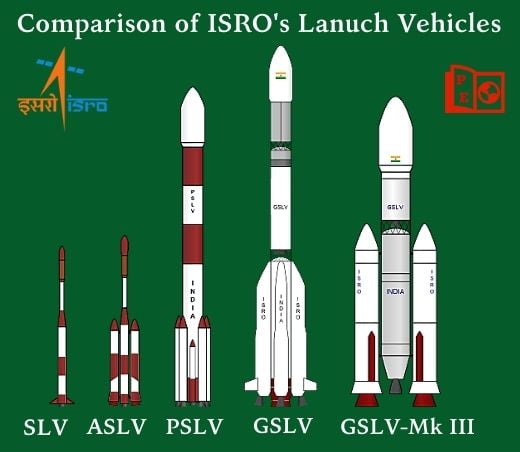
Some special satellites of ISRO
Those above-mentioned satellites and their launch vehicles are just not enough. Talking about the history of ISRO or its launched satellites in the past, this space agency has achieved much more in the field of space science.
While considering ISRO history, some other incidents and special satellites launched by ISRO are given below:
KALPANA-1:
On 12 Sep 2002, ISRO launched a satellite KALPANA-1. This satellite was named after the Indian-born American Astronaut Kalpana Chawla. It was ISRO’s first meteorological satellite, launched by PSLV-C4 from Satish Dhawan Space Centre, Sriharikota.
EDUSAT:
On 20 Sep 2004, ISRO launched its first dedicated educational satellite EDUSAT, also known as GSAT-3.
Chandrayaan-1:
On 22 Oct 2008, India’s first mission to the moon the Chandrayaan-1 lunar probe was launched by the ISRO. And this was the first time India go for Extraterrestrial observation. PSLV-C11 rocket was used to launch this spacecraft.
IRNSS-1A:
ISRO started the Indian Regional Navigation Satellite System (IRNSS) series of satellites and IRNSS-1A was the first one. IRNSS satellites also known as NAVIC (Navigation with Indian Constellation) and are used in the application of real-time positioning and timing services. IRNSS-1A was India’s first dedicated navigation satellite and was launched on 01 Jul 2013 with the PSLV-C22 launch vehicle.
Mars Orbiter Mission (MOM or Mangalayaan):
On 5 Nov 2013, ISRO made a world record, after launching the Mangalyaan spacecraft with help of a PSLV-C25 rocket. Mangalyaan was India’s first interplanetary mission to planet Mars. Indian Space Research Organisation (ISRO) is the only space agency in the world to reach on Mars in a single attempt.
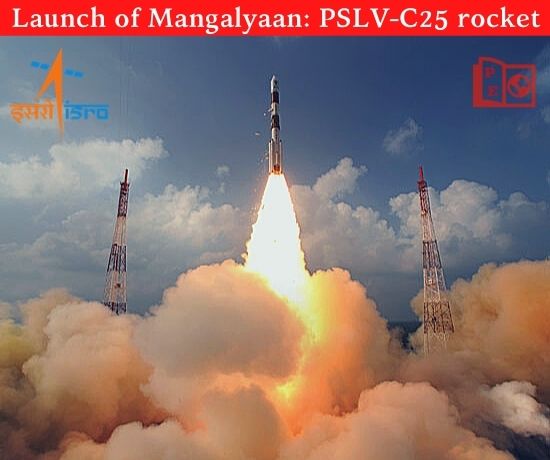
PSLV-C37 with Cartosat -2 Series Satellite:
On 15 Feb 2017, ISRO got one record achievement again while launching 104 satellites on a single rocket PSLV-C37. It carried 3 Indian satellites and 101 international satellites. ISRO broke the record of the Russian Dnepr rocket for launching 37 satellites in a single go, on 19 June 2014.
Chandrayaan-2:
Chandrayaan-2 was launched on 22 Jul 2019 with help of the “GSLV-Mk III – M1” launch vehicle. It was the second mission of India to the moon. This mission of ISRO has a lunar orbiter, a Vikram lander, and a Pragyan lunar rover. All the parts of the orbiter, lander, the rover of Chandrayaan-2 were developed in India.
These were some special spacecraft of ISRO while considering the history of ISRO and past missions.
A special fact about ISRO is, in the starting time they used cycles and bullock-cart to shift the rockets from one place to another. And now ISRO is leading to become one of the top space agencies in the world.
I hope you have liked reading this article “Everything about ISRO: History and Mission”, ISRO information and ISRO missions including its history. Do comment on your point of view about this space agency.
ISRO’s next missions and ISRO future missions will be updated soon in the article “Everything about ISRO”.
Resources: Credits for Images and most information about ISRO goes to ISRO- Government of India.
Also Check:-
- Orbit of the International Space Station (ISS)
- All 8 Planet Facts and Solar System Planets in Order
- Kepler-186f: 1st Earth-Like Habitable Planet
- 5 Best Solar System Backpacks in 2024

- Mass of Planets in Order from Lightest to Heaviest
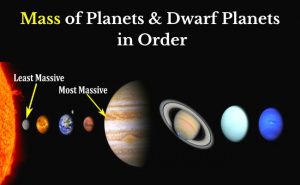
- Star Projector {2024}: Star Night Light Projector

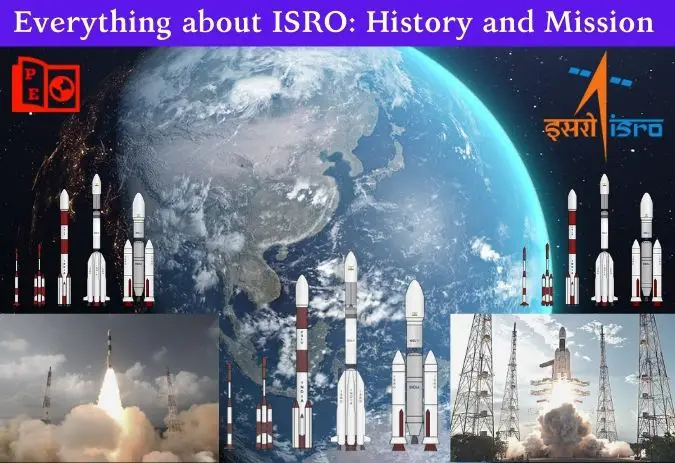

Pingback: DAILY CURRENT AFFAIRS IAS | UPSC Prelims and Mains Exam – 31st March 2023 | IASbaba
Comments are closed.